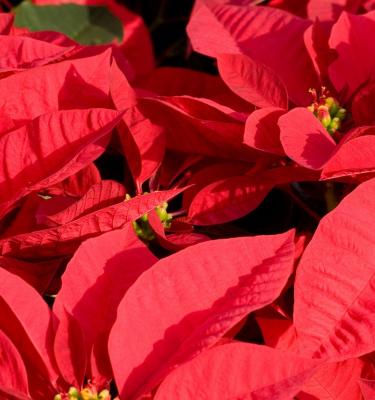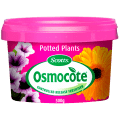

How to Grow & Care for Poinsettia
Poinsettia is a Christmas favourite - their red and green colours are commonly used to bring festive cheer indoors over the holiday season. However, to get poinsettias flowering in our summertime Christmas, they have grown in temperature and light-controlled greenhouses - that trick them into thinking it’s winter time. Poinsettias naturally flower in the winter and if grown outdoors here in Australia, they’ll revert to their natural growing cycle of winter flowering (rather than Christmas time flowers).
The brightly coloured tops of poinsettia that we call the “flowers” are actually technically bracts; the true flowers appear at the very top of each stem and are fairly insignificant! As well as red and green, poinsettias also come in white and green or pink and green colours.
Poinsettias can be grown outdoors in a tropical, subtropic or warm frost-free climate in a protected spot. They prefer full sun to part shade position in a rich, well-drained soil and can be grown in pots.
5 top tips for growing poinsettia
- Poinsettia you buy from the shops or nurseries at Christmas time have been tricked into flowering during summer! Naturally they’ll flower over winter and will quickly revert to this after they’ve finished their festive display.
- Poinsettia can be grown outdoors in tropical, subtropical and warm, frost free areas.
- Grow poinsettia in a full sun to part shade position with a rich, free draining soil. Add Scotts Osmocote Compost Premium Soil Improver to the soil before planting poinsettia.
- Fertilise your poinsettia with Scotts Osmocote All Purpose Controlled Release Fertiliser in spring
- Prune your poinsettia after flowering by 50% to encourage lots of new growth and colour the following season.
Essential shopping list for growing poinsettia
- A poinsettia plant
- Scotts Osmocote Compost Premium Soil Improver
- Scotts Osmocote All Purpose Controlled Release Fertiliser
- Garden shovel
- Mulch
- Defender Pyrethrum Insect Spray
- Defender Snail & Slug Pellets
- If growing in pots, you’ll need: Scotts Osmocote Premium Potting Mix + Scotts Osmocote Controlled Release Fertiliser: Potted Plants and a suitable pot or container
Preparation & planting poinsettia in the garden
Poinsettia can be grown outdoors in the tropics, subtropics or a warm, frost free climate. They prefer a full sun to part shade spot in a well drained soil that's been enriched with plenty of compost.
Prepare the site for planting poinsettia by mixing a little Scotts Osmocote Compost Premium Soil Improver through the original soil - use a garden shovel to turn it through the top 20-30cm. Dig the planting hole, in this prepared soil, twice as wide as the original nursery pot and the same depth.
Gently remove the poinsettia from the nursery pot and plant it into your prepared hole, back-fill around the root ball with more soil. Water in well and mulch to suppress weeds and retain moisture.
Growing poinsettia in pots
Poinsettia can be grown in medium to large pots or planters (at least 30-40cm wide and deep) with good drainage.
Half fill your pot or planter with Scotts Osmocote Premium Potting Mix. Gently remove the poinsettia from the nursery pot and tease the roots lightly if they are compact. Plant the poinsettia into the centre of your pot and backfill around the root ball with more potting mix. Water in well and top the soil with mulch to retain moisture.
Allow the potting mix to dry out between waterings to prevent root rot.
If you’re keeping your potted poinsettia indoors, put it in a warm, bright part of your home - ideally somewhere that gets at least 6 hours of sun a day.
Poinsettia care & fertilising
Poinsettia will benefit from Scotts Osmocote Compost Premium Soil Improver mixed through the soil before planting in the garden or the use of premium potting mix like Scotts Osmocote Premium Potting Mix if growing in pots.
Fertilise your poinsettia using Scotts Osmocote All Purpose Controlled Release Fertiliser for in-ground poinsettia or for potted snapdragons use Scotts Osmocote Controlled Release Fertiliser: Potted Plants. Apply fertiliser in spring and again in autumn.
Prune your poinsettia back hard when flowering finishes (end of winter to early spring) to encourage bushy new growth and flowers the following season. Be careful when pruning as the milky, white sap is toxic and a skin irritant - wear gloves and eye protection.
Common poinsettia pests and diseases
Aphids and thrips can sometimes cause a problem on poinsettias - spray any infestations with Defender Pyrethrum Insect Spray if needed.
Wet, soggy soil or potting mix can cause root rot which will kill poinsettias quickly. Make sure the soil is free draining and the potting mix is allowed to dry out between waterings.



